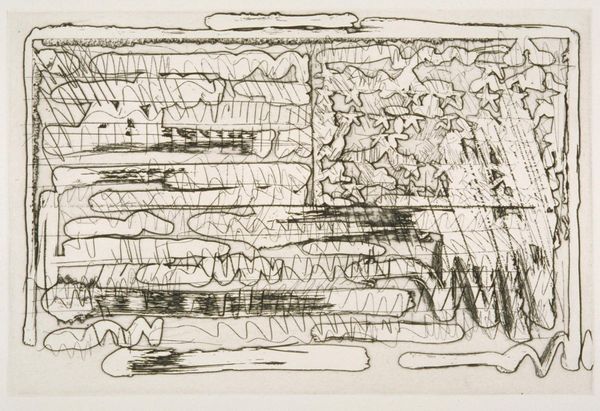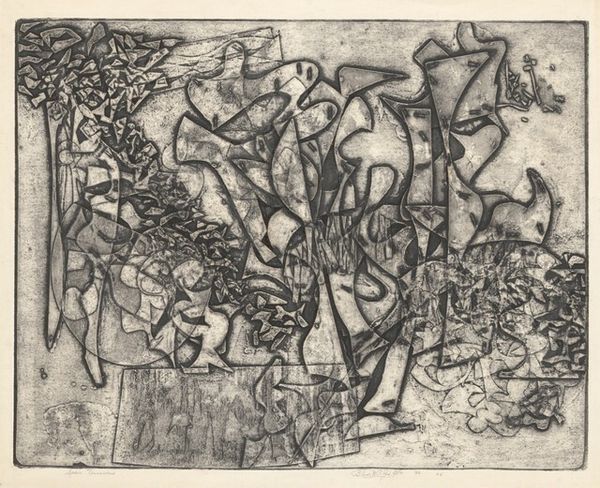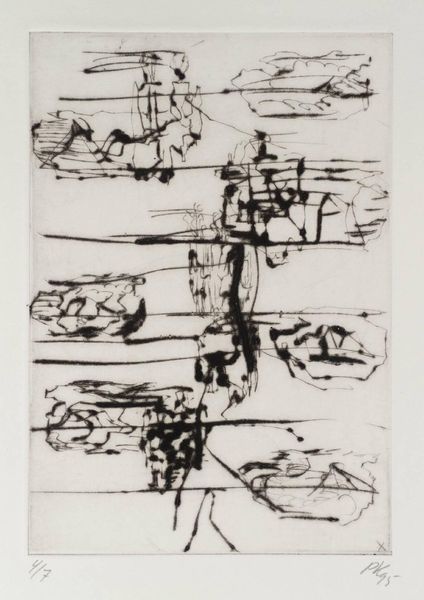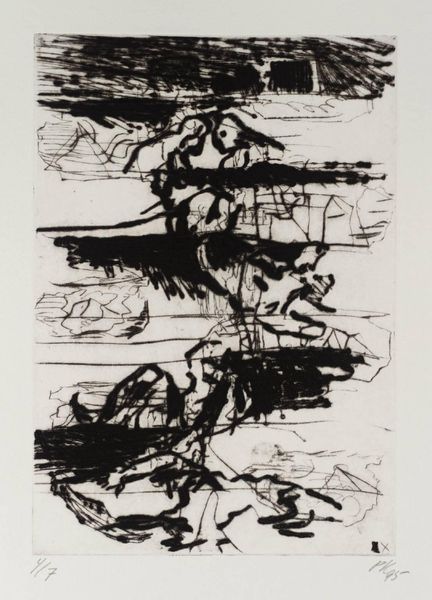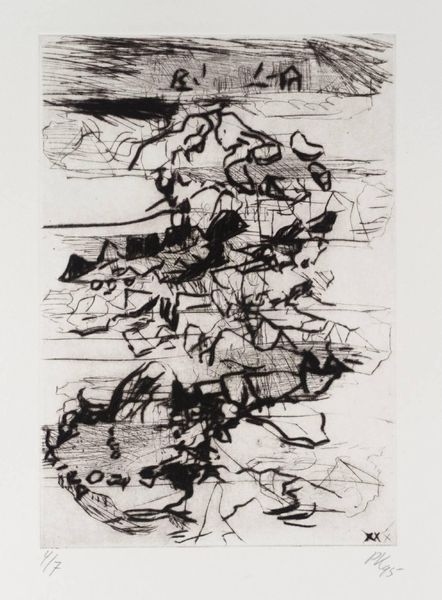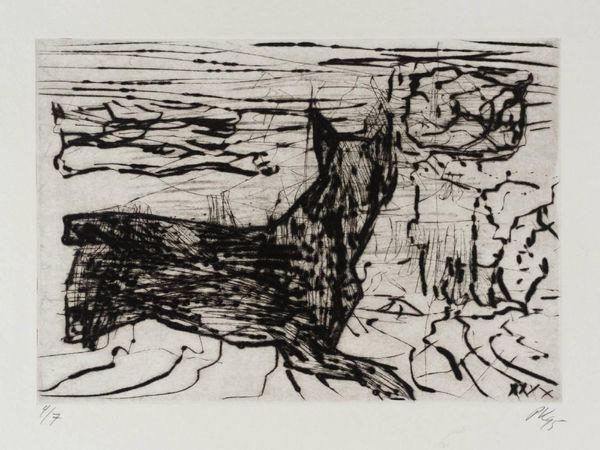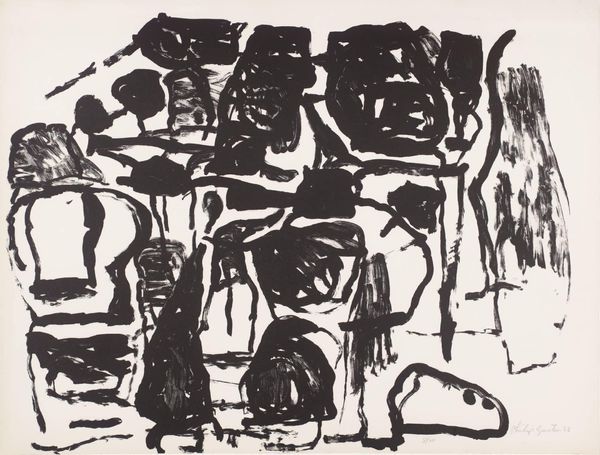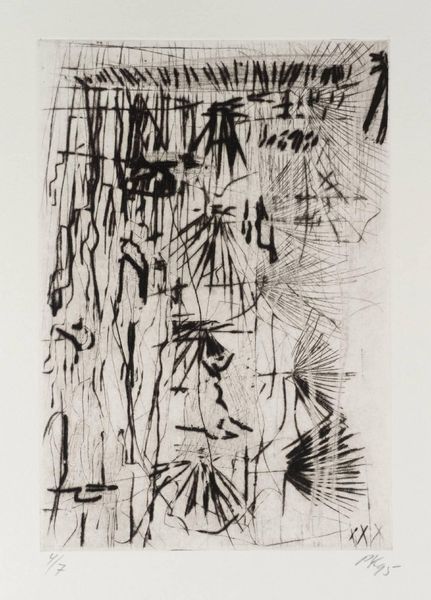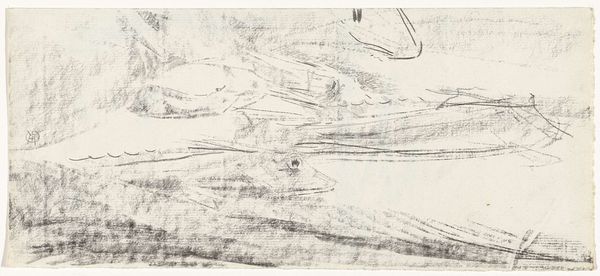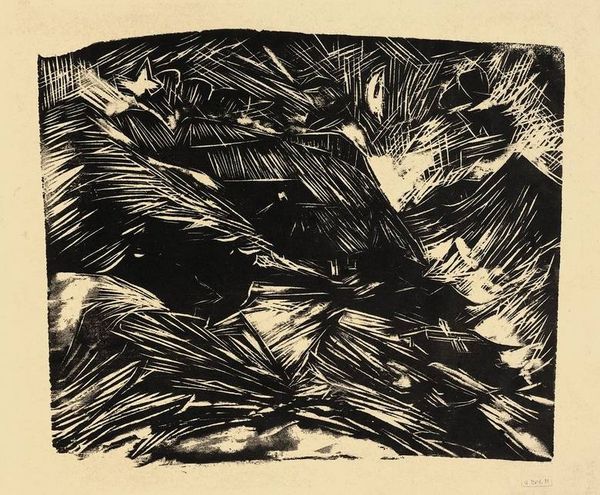
drawing, print, ink
#
abstract-expressionism
#
drawing
# print
#
ink
#
geometric-abstraction
Dimensions: image: 43.5 × 58.42 cm (17 1/8 × 23 in.) sheet: 50.8 × 66.04 cm (20 × 26 in.)
Copyright: National Gallery of Art: CC0 1.0
Editor: This is David Smith's 1952 ink print, "A Letter." It’s… chaotic! It’s full of different abstract shapes and figures scattered across the page. I'm curious – how do you interpret this work, especially considering its title? Curator: "A Letter," yet visually it shatters traditional forms of communication. It makes me consider how we can explore language critically. In the postwar era, artists often grappled with representing trauma and societal upheaval. Do you see any resonance of that here, any suggestion of how fractured experience might manifest on the page? Editor: I guess I do. There's definitely a sense of fragmentation. The marks and shapes feel almost like… coded messages? Broken narratives? Curator: Precisely. Think of it as Smith's refusal of the traditional, polite, and perhaps complicit forms of written correspondence. How can we deconstruct language as a means to examine and challenge the prevailing order, the power structures that define postwar existence? Consider how the Abstract Expressionists wrestled with this, rejecting formal structure as a means to give free reign to deeper social and individual realities. Where might identity intersect in the piece for you? Editor: That's helpful, when I view this as resistance, I wonder what these geometric forms have to say about race and gender norms… maybe in their refusal to appear, like a human. They reject how humans create divisions and rules. Curator: Absolutely. It demands we rethink what "communication" truly entails when representation itself is fraught with socio-political weight. And that art, too, exists not just in the gallery, but within broader societal currents, right? Editor: Exactly. Thanks – now it feels more like an active statement than just a bunch of scribbles! Curator: My pleasure. And that is the point; to realize it requires the work of decolonizing our inherited thoughts on art.
Comments
No comments
Be the first to comment and join the conversation on the ultimate creative platform.
